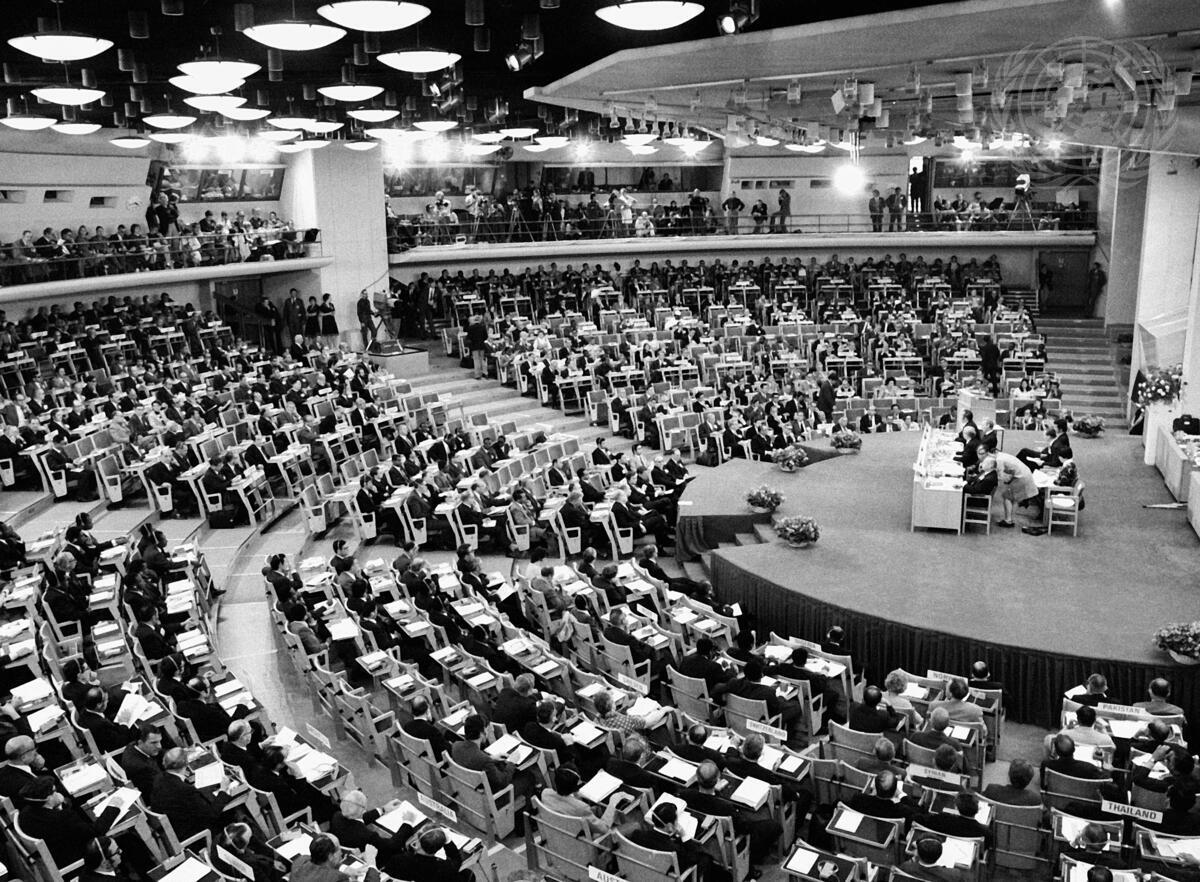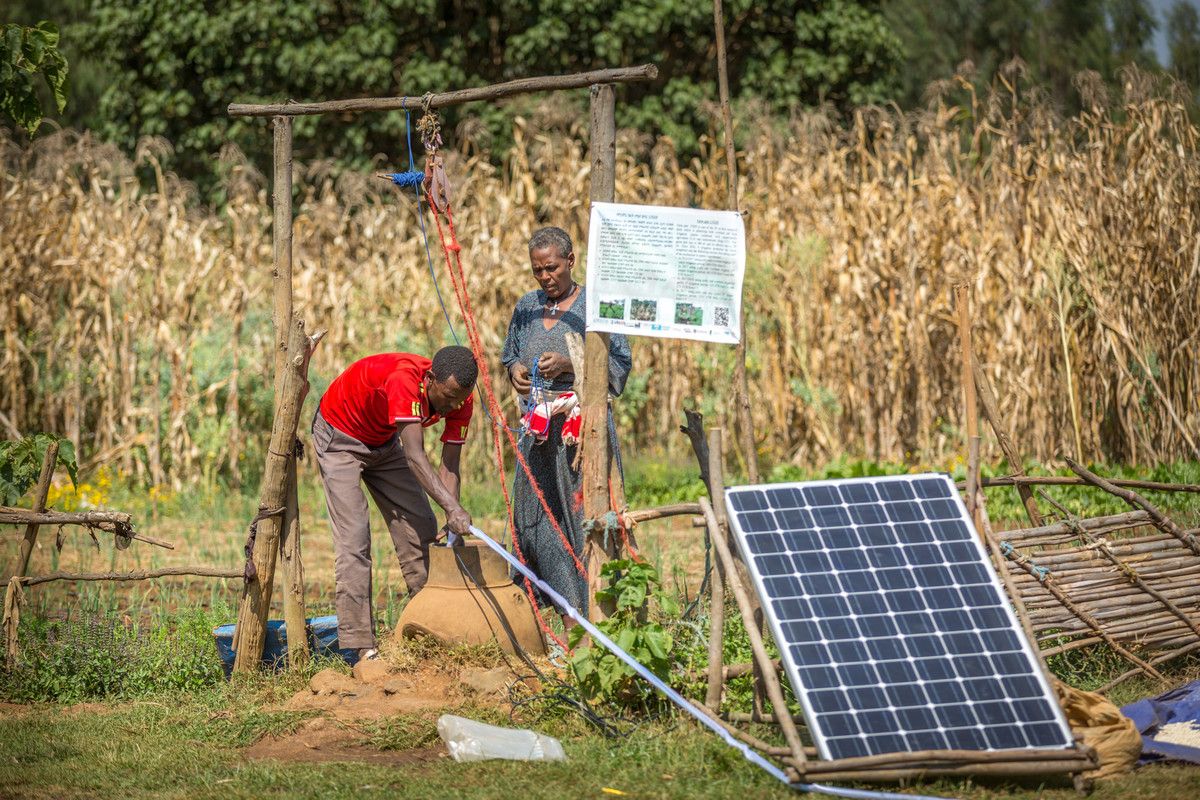Stockholm+50 Weaving Global Environmental Governance
24 May 2022
The Stockholm Conference in 1972 created the framework that still guides how countries negotiate environmental deals. How do we fulfill its vision?
Today, there is a complex web of global treaties, agreements, programmes, and initiatives to address our shared environmental problems. Some are formal and intergovernmental. Others are less formal and involve a range of stakeholders. It’s difficult to think of an environmental issue without international action. Even before the UN Environment Assembly recently launched negotiations for a new plastics treaty, there was action under the Basel Convention and partnerships to try to stem the plastic tide.
These governance structures were created largely in response to the growing recognition of the need for global efforts to address shared challenges. Also in response to the growing recognition of their importance, climate change and, increasingly, biodiversity are joining economic and security issues in the “high politics” of multilateralism. It’s the business of world leaders to routinely discuss climate change and for activists to hold them to account. The UN Secretary-General recently linked the war in Ukraine with ongoing crises of climate change, COVID, and droughts. The war, he said, shows “how the global addiction to fossil fuels is placing energy security, climate action and the entire global economy at the mercy of geopolitics.”
Yet, environmental politics was once completely missing from global discussions and action. Fifty years ago, the UN Conference on the Human Environment changed that and put environmental politics on the global agenda. The legacies are many. The Stockholm Conference created the framework that still guides how we negotiate environmental deals and action.

To mark a half century of environmental multilateralism, Sweden is again hosting the world in Stockholm, on 2-3 June for Stockholm+50. It will be both commemoration and call to action. The conference aims to accelerate the implementation of the UN Decade of Action to deliver the Sustainable Development Goals, including the 2030 Agenda, Paris Agreement on climate change, the post-2020 global biodiversity framework, and encourage the adoption of green post-COVID-19 recovery plans.
These are lofty goals but there are key lessons from the last fifty years that could expedite the next half century of multilateral action to better the environment—if we embrace them. The incentive to apply these lessons could not be clearer as the accelerating “triple planetary crisis” of climate change, biodiversity loss, and pollution threatens life on our planet.
Legacies of Stockholm
Environmental politics is near the core of global politics. Stockholm was the first ‘mega conference’ to discuss environmental issues. It convened in 1972, a time of turbulence in global politics. The Cold War was as tense as ever. The global economic system was in transition, after Richard Nixon announced the US dollar would no longer be converted into gold. More fundamentally, former colonies were becoming independent states. By 1970, there were 127 members of the UN, a huge increase from the 35 members in 1945. The world was undergoing enormous change.
In this context, developing countries were wary of a conference devoted to environmental issues. They worried this could be colonialism under a new guise. The Global North consumed the majority of the world’s resources, developing countries pointed out. Why should environmental issues be a concern for the Global South? They worried about green issues as a way to interfere with their development. This worry was not far-fetched. In the 1970s, newly independent countries prioritized building their economies and institutions on their own terms. It was not immediately apparent how a conference initiated and hosted by developed countries on a new set of issues could assist with poverty eradication.
What emerged was a call to merge the poverty and environmental agendas in a way that protects developing countries’ right to development. Prime Minister Indira Gandhi famously asked those gathered in Stockholm “Are not poverty and need the greatest polluters?” This call would ripple for decades to come. The concept of sustainable development defined in 1987, the 2015 Sustainable Development Goals, and intervening mega conferences centered on advancing environmental protection and economic and social development, with poverty reduction at the heart of many discussions.

But developing countries’ initial concerns have at least partially been born out. For example, national parks proliferated, built on Western ideas of “unspoiled nature” that drove Indigenous Peoples from their lands, or regulated how they could use the land. Rights abuses are also evident in modern forms of forest conservation, including Reducing Emissions from Deforestation and Degradation initiatives.
Climate change was not on the Stockholm agenda - or even an issue foreseen by those in Stockholm. This year, the IPCC recognized colonialism as a driver of climate change for the first time. Economic and political legacies continue today, and are threatening our planet. The poorest are the most vulnerable to climate change. More frequent droughts, floods, storms, and diseases (to name a few impacts) could undermine all the development gains made to date. Support for adapting to the effects of climate change is a fraction of overall climate funding; the OECD’s estimate of 20% is by some measures generous. A recent report of climate change finance flows shows that most climate funding remains well below what was promised and is mostly loans, increasing developing countries’ debt burden. Low-carbon, climate-resilient development requires support for developing countries to realize their goals and priorities. After 50 years, on both the material and ideational, there are gaps.
Stockholm’s central challenge - and ultimate insight - was that equity and the environment go hand in hand, and that equity is fundamental to multilateralism. It has become more relevant over time. Ongoing colonialism continues to hamper the prospects and rights of peoples around the world. Technological changes have given us affordable, clean power, which still needs to be made available for all. It has also created new waste problems, including plastics and electronic waste.

In this context, the 2030 Agenda strives to integrate the idea of “leaving no one behind.” It is an evolution of the discussions in Stockholm, built on experience. In Stockholm, delegates sought to mainstream poverty alleviation in environmental action - and vice versa. It was a broad, conceptual starting point. The 2030 Agenda’s focus on the need for universal implementation has taken the agenda to a new level. Everyone matters and must be included in the deliberation, design, and delivery of environmental and poverty alleviation efforts. It is ambitious, and very necessary. Equity is fundamental to effective multilateralism. As we’ve recently seen, all types of equity matter. Vaccine inequities create challenges for delegates and civil society representatives to attend global meetings, while the digital divide proved a barrier to online negotiations.
Equity and the environment are ever more intertwined. Whether it is a downward spiral, or a virtuous circle will largely determine if we can stay within the Paris Agreement’s temperature goals. The right to development, rights, and all forms of equity must be at the heart of environmental action. Multilateralism will be crucial. Even now, as the war in Ukraine joins other conflicts and pressures in stretching multilateralism to its limits, only truly global action can realize the vision put forward in Stockholm.
This article was originally distributed in the Earth Negotiations Bulletin Linkages Update enewsletter and was written by Dr. Jennifer Allan and Dr. Lynn Wagner.
Bookmark our coverage of Stockholm+50 to follow the discussions on 2-3 June.